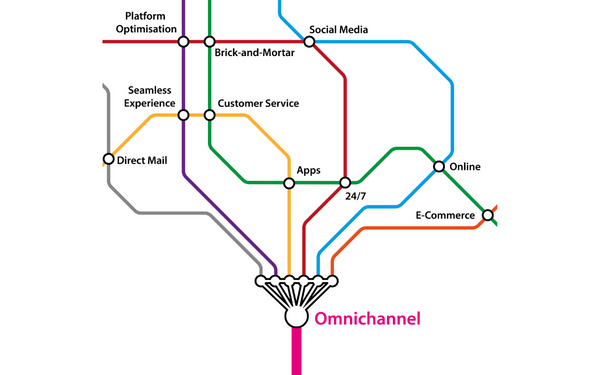‘Omnichannel’ is one of those buzzwords that has come to be an everyday part of business discourse. Especially in retail, you’ll hear it thrown around at workshops and scattered through think pieces all the time.
The only right strategy these days is an omnichannel strategy, it seems. If you want to keep your customers happy, you have to offer them an omnichannel experience.
But what exactly does all this mean? How do you ‘do’ omnichannel when you run a shop or a retail business? And what are the benefits?
Omnichannel not multichannel
Omnichannel is a concept that has grown up with the internet. It reflects the fact that, ever since online commerce has been a thing, retailers no longer have just the one ‘channel’ (i.e. physical stores) to sell through. And over time, the number of digital channels has kept on expanding, from ecommerce sites to marketplaces to mobile apps to social and on and on.
Consumers and retailers alike now enjoy all sorts of different ways they can go about buying and selling. But key to the omnichannel concept is the idea that, from a business strategy perspective, it’s not enough to just spread yourself around all of these channels in a piecemeal fashion. Omnichannel is about bring operations across multiple channels together in an integrated, cohesive whole.
Why? This kind of unified approach brings benefits in terms of how efficiently you can run your operations. It avoids repetition and duplication. It also opens the door to gains that can be made from sharing data and intelligence from across all the different arms of your business.
But the strongest arguments made in support of the omnichannel approach are those that talk about offering an “omnichannel experience” to your customers. As Hubspot puts it:
“The omni-channel experience is marketing, selling, and serving customers on all channels to create an integrated and cohesive customer experience no matter how or where a customer reaches out. The experience should be the same for customers regardless of the platform or method they choose to use.”
So from a consumer’s perspective, an omnichannel experience is all about consistency and convenience. It’s about ensuring that, for example, if a customer looks up the price of a product online, it should be the same if they decide to head in store to buy it. Or making sure they can take advantage of the same offers they see online.
Expanding the in-store omnichannel experience
That sounds pretty basic these days. It has become standard practice for retailers to run all of their inventory and merchandising from a single system, for example, to ensure that prices, promotions and product availability are aligned across all channels.
But the boundaries of omnichannel integration continue to be pushed back. And it’s the evolution of technology that allows it. For example, it is widely accepted that in-store retail can learn plenty from ecommerce, or at the very least adapt the ‘experience’ offered in a shop to mimic the preferences that consumers have developed from shopping online.
So we see retailers installing self-service kiosks not just as a means to keep queues at checkout to a minimum, but to give shoppers the option of looking up product details and making purchases without having to ask for assistance – the kind of autonomy they enjoy having online.
Or, through loyalty schemes and other forms of opt-in identification, retailers are increasingly able to harness data from digital channels (browsing habits, purchase history etc) to make the service they provide in store more personal and individualised. Just as online algorithms are widely used to make personalised recommendations or offer targeted promotions to people browsing online, the same data can be made available through POS end points to help staff tailor the service they provide.
Whether it’s online or offline, delivered by an AI bot or a human sales assistant, intelligence-led service and promotions help to ensure that more upsell recommendations convert, for example. More generally, they help to make sure the advice and service customers get is laser focused on what they are looking for and want. That in turn leads to higher customer satisfaction and increased loyalty.
And that, in essence, is what the ‘omnichannel experience’ is all about. Not just delivering consistency across the multiple customer touchpoints your business has, but taking advantage of the wealth of data and intelligence channel integration makes available to drive consistent excellence.




